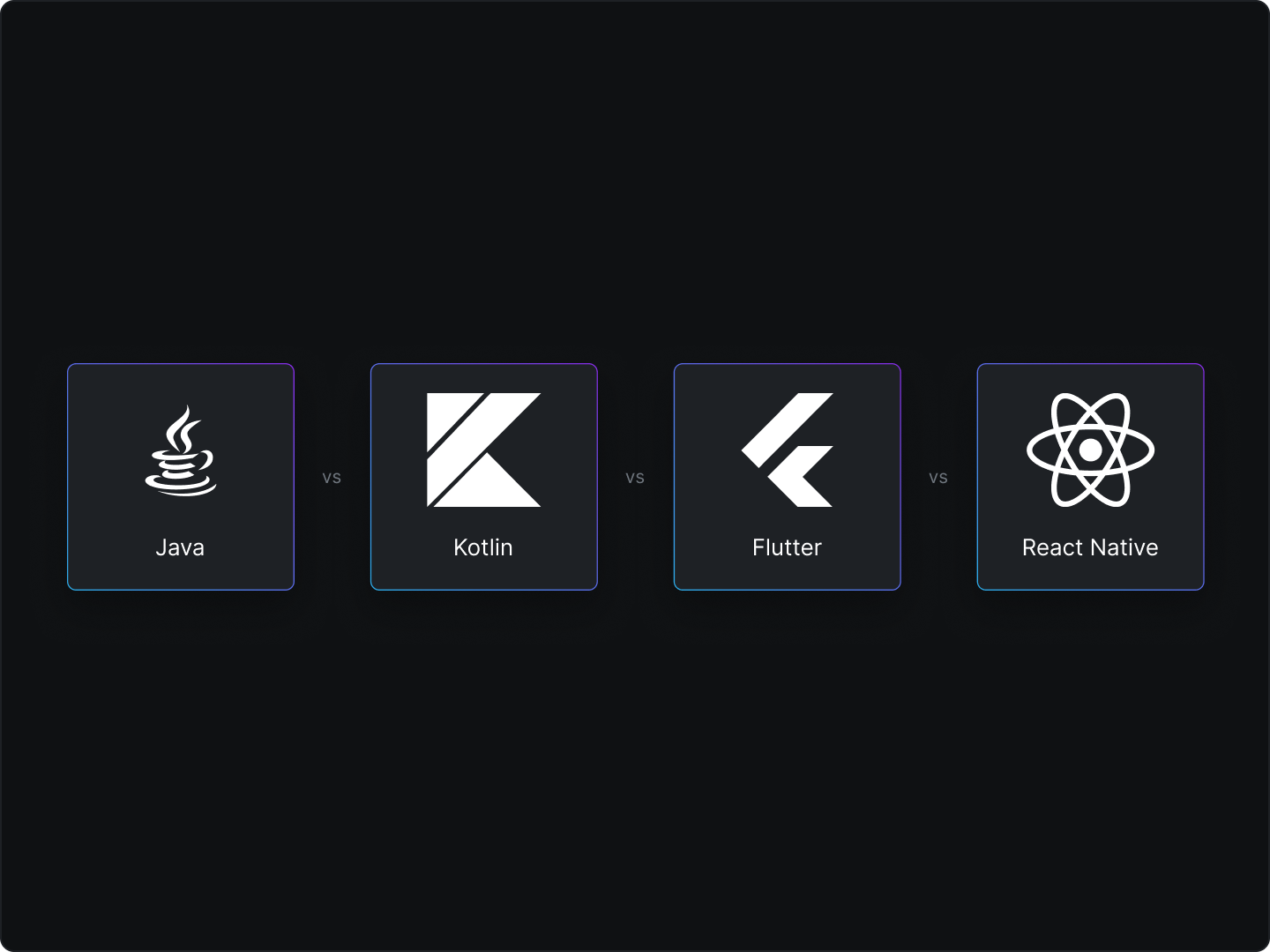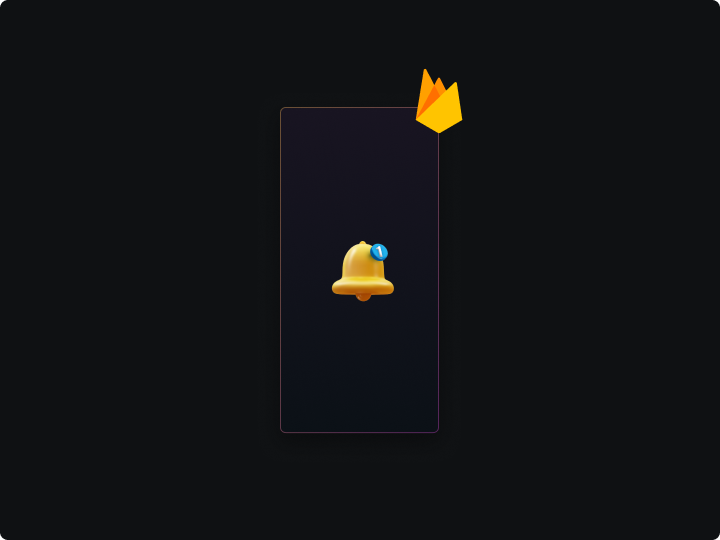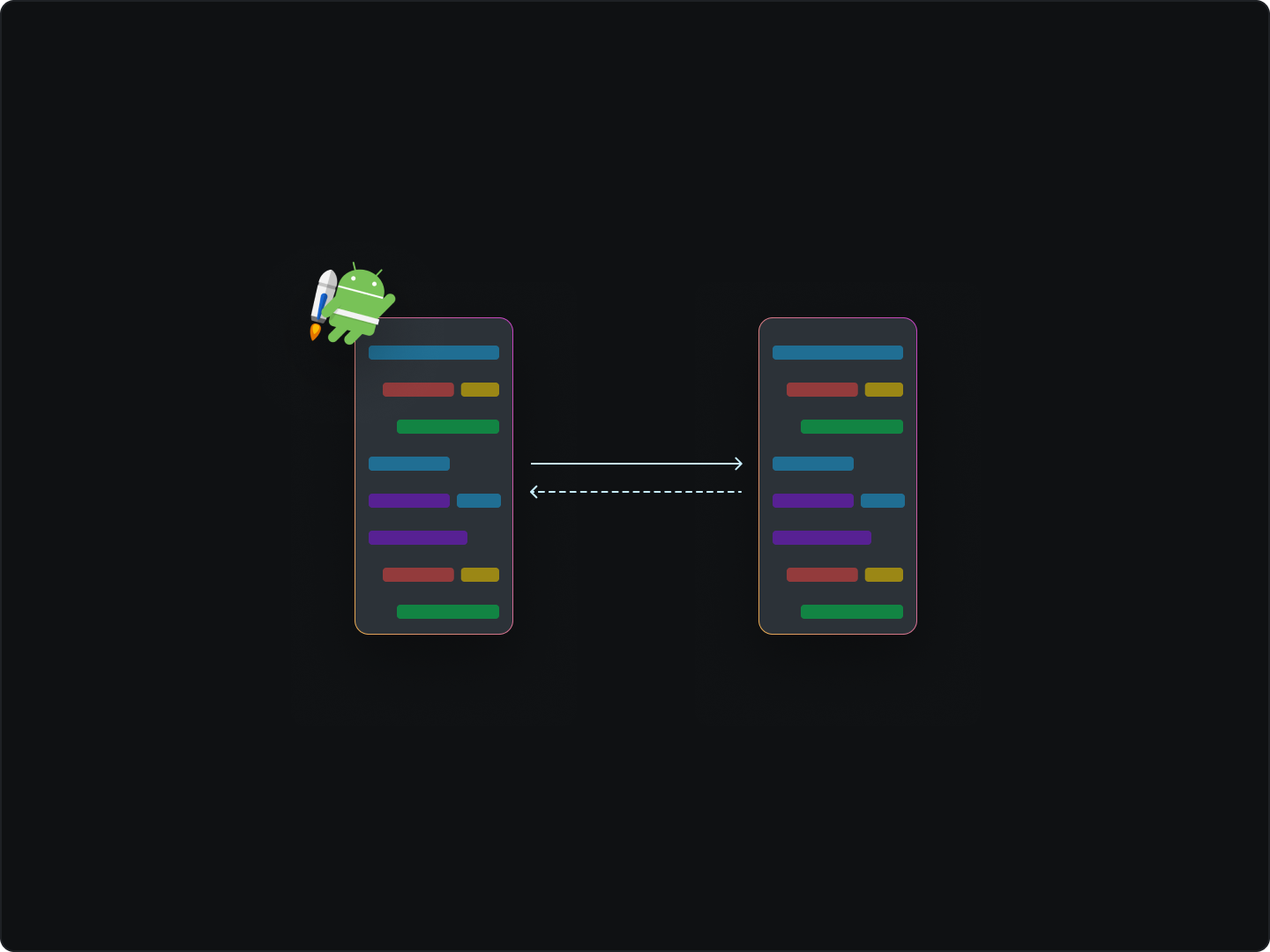As an Android developer, choosing the right framework for your project can be a difficult task. With so many options out there — Java, Kotlin, Flutter, and React Native — it can be hard to decide which one is best suited for your project. In this article, we’ll break down the technical details of each and their respective pros and cons to help you make an informed decision.
Java
Java is the most widely used programming language for Android development and has been the official language for Android development since the platform’s launch. It has a large and mature ecosystem, with a wide range of libraries and frameworks available. Java also has great support from Android Studio, which is the official Android development environment
- Language Stack: Object-oriented, class-based programming language. The syntax is derived from C and C++. It provides a comprehensive set of APIs for developing robust mobile applications
- Minimum Supported Platforms: Java is primarily used for developing android applications and it can run on any android device that runs Android 2.3 (Gingerbread) and above.
- Performance: Java has good performance, thanks to its use of Just-In-Time (JIT) compilation and the Java Virtual Machine (JVM) which is optimized for mobile devices. The Dalvik Virtual Machine (DVM) helps optimize resources in order to deliver fast code execution and better battery life on devices with low memory capabilities
- User Interface: It offers a wide range of libraries and frameworks for creating user interfaces for android, such as Android XML layouts and Android Jetpack.
- Features: Java offers a wide range of features including automatic memory management, strong type checking, support for multithreading, and built-in security features. Java is a mature language that has been around for over 20 years. As a result, it is a stable and reliable language that is well-suited for building large-scale, enterprise-level applications.
- Learning Curve: The learning curve is relatively steep due to its complexity but once you get familiar with it then you can easily create high-quality apps with minimal effort
- Community: Java is a mature and widely-used programming language, and it has a rich ecosystem of libraries and frameworks. As a result, there are a lot of resources and documentation available for Java, making it relatively easy to learn for those with prior programming experience. However, for someone who is new to programming, the syntax and concepts of Java can be challenging to pick up.
- Pros: Java has good performance, automatic memory management, and a wide range of libraries and frameworks for android development.
- Cons: Java can be verbose, which can make it less readable and harder to write than other languages. It can be memory-intensive, which can result in poor performance on lower-end devices.
Kotlin
Kotlin is a newer programming language that was developed by JetBrains and officially supported by Google for Android development. It is fully compatible with Java and can be used to build apps in a similar way. However, Kotlin has some additional features such as null safety and extension functions that can make development more efficient and reduce the likelihood of common bugs.
- Language Stack: Kotlin is a cross-platform, statically typed, general-purpose programming language that is fully interoperable with Java.
- Minimum Supported Platforms: All of them! Kotlin is compatible with JDK 6, so apps with Kotlin safely run on older Android versions
- Performance: Kotlin’s performance is comparable to Java’s due to its bytecode being compiled into JVM bytecode which then gets executed by Java virtual machine (JVM). Furthermore, it uses an optimizing compiler that further improves its performance compared to interpreted languages like Python or JavaScript.
- User Interface: It offers a wide range of libraries and frameworks for creating user interfaces, such as Android XML layouts and Android Jetpack compose for developing user interfaces.
- Features: Kotlin offers a wide range of features including null safety, extension functions, data classes, coroutines, and type inference.
- Learning Curve: As compared to other popular programming languages like Java or Python, the learning curve for kotlin is relatively easier. Kotlin code is often more concise than equivalent Java code, which can make it easier to read and understand
- Community: Kotlin has a large and active community, with many resources available for learning and troubleshooting.
- Pros: Kotlin has good performance, null safety, extension functions, data classes, coroutines, and type inference, also it’s fully interoperable with Java.
- Cons: Limited resources in comparison to other popular languages like Java. Limited number of libraries compared to what is available for others.
Flutter
Flutter is a mobile app development framework created by Google. It uses the Dart programming language and allows developers to build high-performance, visually attractive apps for both Android and iOS. Flutter’s widgets incorporate all critical platform differences such as scrolling, icons, and fonts to provide full native performance on both iOS and Android.
- Language Stack: Flutter uses Dart as its primary programming language
- Minimum Supported Platforms: Flutter supports Android 4.1 (API level 16) and iOS 8.0 and also web, desktop and embedded devices.
- Performance: Flutter apps are known for their high performance and smooth animations, thanks to their use of the Skia graphics engine and a reactive programming model.
- User Interface: Flutter offers a unique and rich set of customizable widgets, which allows for expressive and flexible UIs.
- Features: Flutter offers a wide range of features including Hot Reload, a rich set of customizable widgets, and a fast development cycle, making it easy to create high-performance and visually attractive apps.
- Learning Curve: Learning curve isn’t too steep since most concepts are behind the framework, you should be already familiar with them if ever developed apps using other popular frameworks like React Native.
- Community: While still relatively small compared to some more established frameworks languages, the community around fluttering is growing rapidly.
- Pros: Flutter offers high performance, a fast development cycle, and a wide range of customizable widgets, making it easy to create visually attractive and high-performance apps across multiple platforms: develop once for both android and iOS. Choosing Flutter reduces that cost and provides an almost similar UI of your app on both platforms.
- Cons: The learning curve for Flutter can be steep, and it may have a limited number of third-party libraries available compared to other frameworks.
React Native
React Native is a framework for building cross-platform mobile apps using JavaScript and React. It allows developers to write code once and run it on both iOS and Android platforms. It also has a large community and a wide range of third-party libraries available. However, it may not perform as well as natively written apps and may have more issues with platform-specific features.
- Language Stack: React Native uses JavaScript and JSX (a syntax extension for JavaScript) as its primary programming languages.
- Minimum Supported Platforms: React Native requires Android 6.0 (Marshmallow) SDK or later and iOS 12.4
- Performance: React Native has good performance, thanks to its use of native components and asynchronous JavaScript execution.
- User Interface: React Native offers a wide range of components and libraries for creating user interfaces, such as React Native Elements and React Navigation.
- Features: React Native offers a wide range of features including Hot Reload, a large number of third-party libraries, and a fast development cycle.
- Learning Curve: React Native has a moderate learning curve for developers who are familiar with React and JavaScript.
- Community: The developer community around react-native is quite active which helps make finding solutions quicker.
- Pros: React Native offers a fast development cycle, a wide range of third-party libraries, and good performance using native components. Most importantly, you should check out support for OTA updates (Over the air updates). Other frameworks rely on the user’s mercy when it comes to keeping your app up-to-date on your user’s device. Once you ship an update, it's up to the user to install the new update. Although there are means by which you can persuade users to keep the app up-to-date, React allows you to ship real-time OTA updates to users.
- Cons: React Native has a steeper learning curve for developers who are not familiar with React and JavaScript. Additionally, it may have inconsistencies in the look and feel of the user interface across different platforms.
What does the community have to say?
Before making a conclusion, let’s see what has the community to say when it comes to selecting tech for developing their android applications in 2023.

You might also want to check out these threads —
- https://www.reddit.com/r/androiddev/comments/10jcqww/flutter_vs_react_native_vs_java_vs_kotlin/
- https://www.reddit.com/r/androiddev/comments/s21va3/kotlin_vs_react_native_vs_flutter/
- https://www.reddit.com/r/learnprogramming/comments/uvg2up/i_want_to_develop_for_android_should_i_go_for/
- https://www.reddit.com/r/Frontend/comments/yt3nvr/react_native_vs_flutter_vs_kotlin_vs_swift/
- https://www.reddit.com/r/androiddev/comments/vzuz0g/kotlin_native_vs_react_native_vs_flutter/
- https://www.reddit.com/r/Kotlin/comments/ynec2g/latest_java_vs_kotlin/
Closing Thoughts
In conclusion, choosing the right framework for your Android development project can be a daunting task. Each framework has its own set of pros and cons, and it’s essential to consider the specific needs of your project now and in future before making a decision.
- If cost is your priority and you want to ship your app on both the play store and app store, go with flutter. But building complex apps on flutter might pose a challenge in the future.
- If you know you will be pushing frequent updates or will be running multiple experiments on your product, prefer opting to react.
- If none of the above is a priority for you, now or in the future, choose native app development. Once your product is stable enough and reached a stage when you can afford to migrate from a non-native to a native app, you can always do that in the future.
- Java is the most widely used language and has a large and mature ecosystem, making it a great option for those looking for a stable and well-established framework.
- Kotlin is a newer language that is fully compatible with Java but offers additional features such as null safety and extension functions.
- Flutter is a powerful framework that allows for fast and customizable app development, but has a steeper learning curve.
- React Native is a popular choice for those looking to develop cross-platform apps but has a smaller community and less built-in support for Android.



